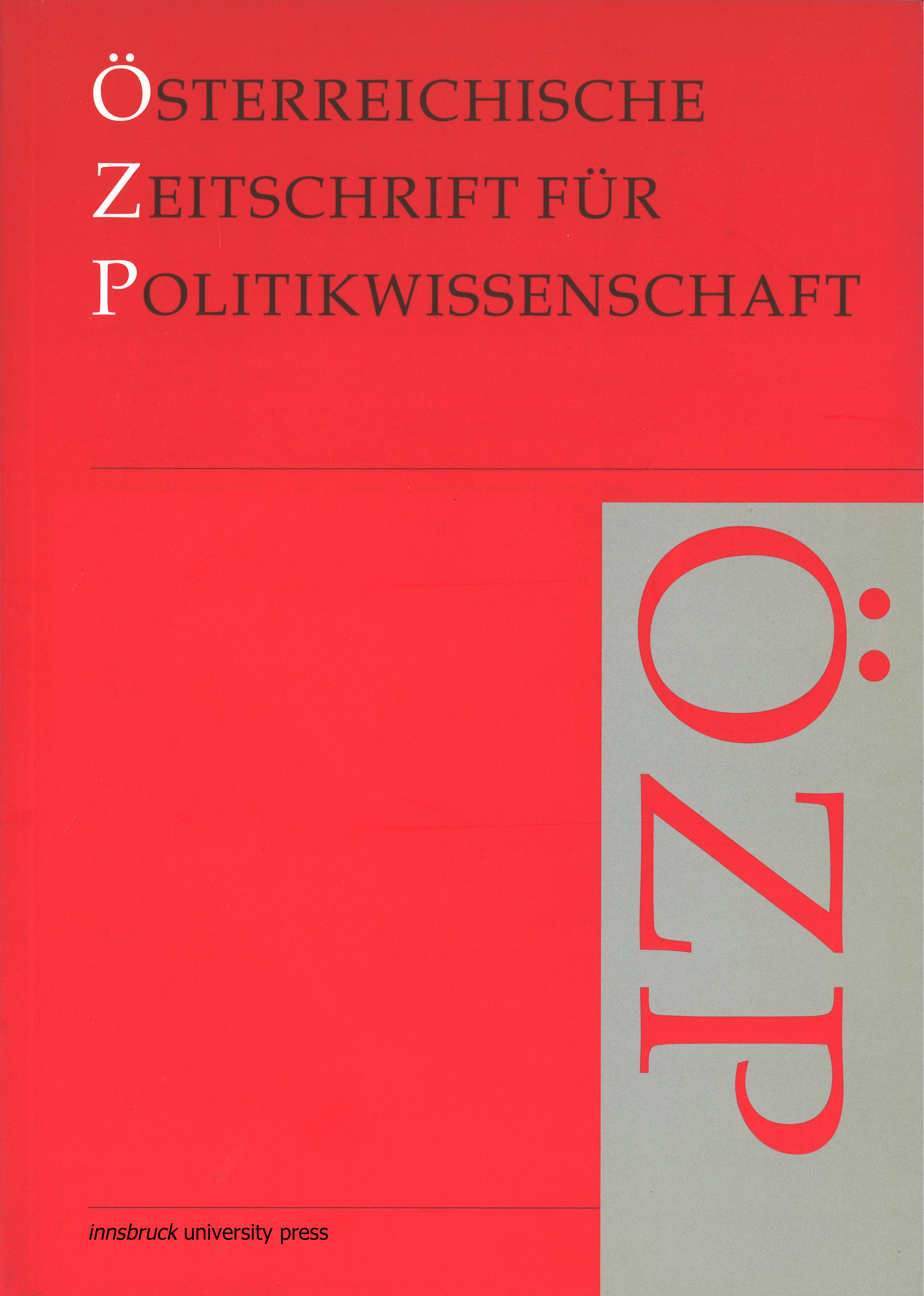Partei- und Koalitionskriterien der österreichischen Wählerschaft für die Nationalratswahl 2006
DOI:
https://doi.org/10.15203/ozp.927.vol36iss4Schlagwörter:
Koalitionswählen, strategisches Wählen, Koalitionspräferenzen, Parteipräferenzen, IssuepräferenzenAbstract
Ergebnis-orientiertes Wählen berücksichtigt die Folgen der eigenen Stimmabgabe für die Regierungsbildung. Das ist in Mehrparteiensystem generell schwierig und war bei der Nationalratswahl 2006 wegen der vielen plausiblen Regierungsoptionen besonders schwierig. Trotzdem haben die österreichischen WählerInnen Koalitionspräferenzen entwickelt. In dem Beitrag wird zunächst die Partei- und Koalitionskonstellation aus der WählerInnensicht insgesamt beschrieben und mit den politischen Einstellungen der Wählerschaft interpretiert. Dann interessiert das Verhältnis zwischen den Partei- und Koalitionspräferenzen bei den einzelnen WählerInnen, weil nicht einfach davon ausgegangen werden kann, dass letztere eine simple Folge der ersteren sind. Im dritten Schritt kann dann nachgewiesen werden, dass die Koalitionspräferenzen auch bei Kontrolle der Parteipräferenzen einen eigenständigen Einfluss auf die Wahlentscheidung haben. Es existiert ein interner Mobilisierungseffekt, der Anhänger einer Partei zur Wahlentscheidung für ihre Partei umso mehr motiviert, je stärker eine bestimmte Koalitionspräferenz der eigenen Partei mit einem plausiblen Koalitionspartner vorhanden ist. Und es existiert ein externer Mobilisierungseffekt bei WählerInnen ohne starke Parteipräferenz. Je positiver diese Gruppe eine große Koalition bewertet hat, desto stärker wuchs die Bereitschaft SPÖ zu wählen, während die ÖVP generell von Koalitionspräferenzen weniger profitierte.Downloads
Ausgabe
Rubrik
Lizenz
The OZP is the authorized publication of the Österreichische Gesellschaft für Politikwissenschaft (ÖGPW, Austrian Political Science Association)
The author of an article (in case of multiple authors: the corresponding author, responsible for releasing this material on behalf of any and all co-authors) accepted to be published in the OZP hereby acknowledges the following Copyright Notice:
- The author retains the copyright to the article.
- It is the responsibility of the author, not of the OZP, to obtain permission to use any previously published and/or copyrighted material.
- Publication of a submitted text is dependent on positive results from the peer reviewing. In such a case, the OZP editors have the right to publish the text.
- In case of publication, the article will be assigned a DOI (digital object identifier) number.
- The author agrees to abide by an open access Creative Commons Attribution (CC BY-SA) license. The license permits any user to download, print out, extract, reuse, archive, and distribute the article under the same license, as long as appropriate credit is given to the author and source.
- The license ensures that the author’s article will be available as widely as possible and that the article can be included in any scientific archive. In order to facilitate distribution, the author agrees that the article, once published, will be submitted to various abstracting, indexing and archiving services as selected by the OZP.
- In addition, the author is encouraged to self-archive the article, once published, with reference to the place of the first publication.
- After the contribution appears in the OZP, it is still possible to publish it elsewhere with reference to the place of the first publication.
- The finished article, if published, will include a correspondence address (both postal and email) of the author.
- If written under the auspices of a grant from one or more funding agencies, such as FWF (Austrian Science Fund), ERC (European Research Council), and Horizon 2020 (EU Framework Programme), an article accepted for publication has to be deposited in an Open Access archive. The OZP’s archiving policy is compliant with these provisions. (In case the article derives on funding from a different source, the author is responsible to check compliance of provisions.)




